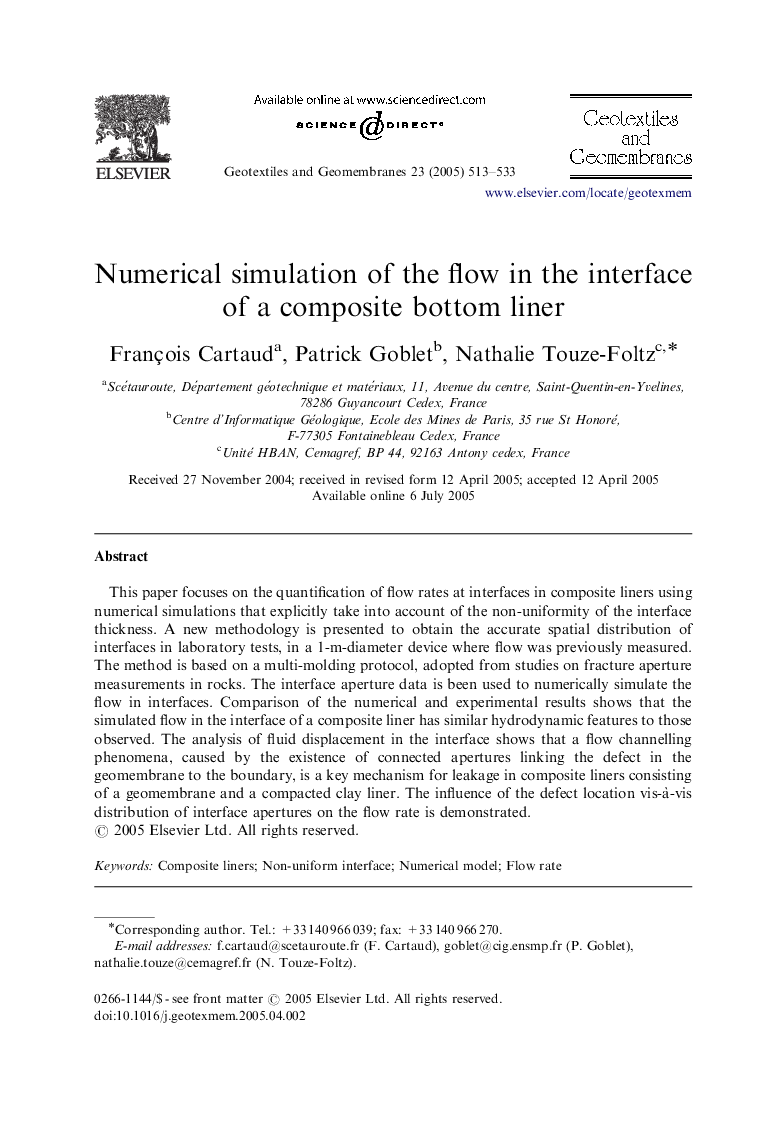| Article ID | Journal | Published Year | Pages | File Type |
|---|---|---|---|---|
| 10288576 | Geotextiles and Geomembranes | 2005 | 21 Pages |
Abstract
This paper focuses on the quantification of flow rates at interfaces in composite liners using numerical simulations that explicitly take into account of the non-uniformity of the interface thickness. A new methodology is presented to obtain the accurate spatial distribution of interfaces in laboratory tests, in a 1-m-diameter device where flow was previously measured. The method is based on a multi-molding protocol, adopted from studies on fracture aperture measurements in rocks. The interface aperture data is been used to numerically simulate the flow in interfaces. Comparison of the numerical and experimental results shows that the simulated flow in the interface of a composite liner has similar hydrodynamic features to those observed. The analysis of fluid displacement in the interface shows that a flow channelling phenomena, caused by the existence of connected apertures linking the defect in the geomembrane to the boundary, is a key mechanism for leakage in composite liners consisting of a geomembrane and a compacted clay liner. The influence of the defect location vis-Ã -vis distribution of interface apertures on the flow rate is demonstrated.
Related Topics
Physical Sciences and Engineering
Earth and Planetary Sciences
Geotechnical Engineering and Engineering Geology
Authors
François Cartaud, Patrick Goblet, Nathalie Touze-Foltz,
